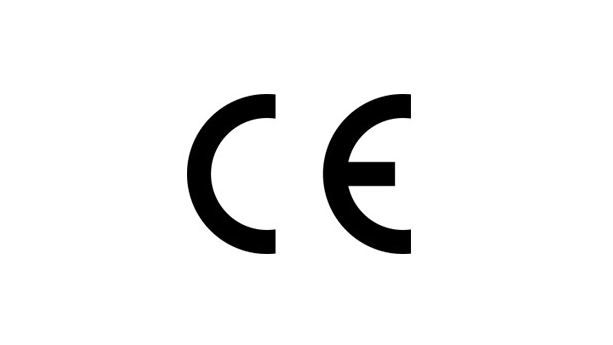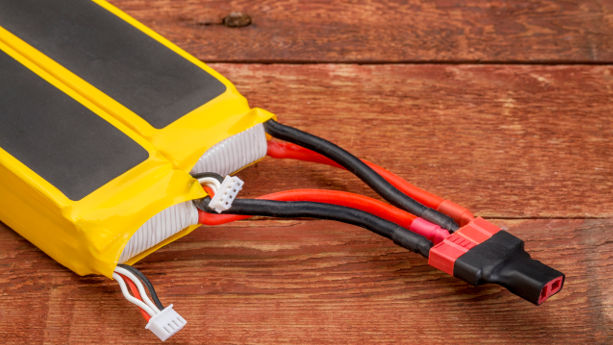Lithium batteries are subject to various regulations and directives in the European Union that concern safety, substances, documentation, labelling, and testing. These requirements are primarily found under the Batteries Regulation, but additional regulations, directives, and standards are also relevant to lithium batteries.
Notice that this guide only covers batteries, rather than requirements applicable to devices that contain them.
Content Overview

FREE CONSULTATION CALL (US, EU & UK)
- Request a free 30-minute call with Ivan Malloci to learn how we can help you with:
- Find product requirements
- Certification and labeling
- Lab testing
Batteries Regulation
TheBatteries Regulation covers all types of batteries, including lithium batteries. Here are some of the main areas covered by the regulation:
- Safety requirements
- Substance restrictions
- Declaration of conformity
- Technical documentation
- Labelling requirements
- Testing requirements
Harmonised standards
Here are some standards relevant to lithium batteries that are harmonised under the regulation.
| Title | Description |
| EN IEC 62485-5 | This standard applies to stationary secondary batteries, including lithium-ion batteries. It describes measures for protection against a range of hazards during normal and expected fault conditions. |
| EN IEC 62619 | This standard contains requirements and tests for the safe operation of secondary lithium cells and batteries used in industrial applications, including stationary applications. |
Documentation
Here we list the main documents that are required by the regulation and provide their respective descriptions.
| Title | Description |
| Declaration of Conformity | This document indicates the manufacturer that is responsible for the conformity of the product (e.g. a lithium battery).
The model structure for the declaration is contained in Annex IX of the regulation. |
| Technical Documentation | The technical documentation should contain information (e.g. description of the lithium battery and its intended use) that makes it possible to assess the lithium battery’s conformity with the requirements of the regulation.
The regulation lists the required documentation in Annex VIII. |
| Digital Battery Passport | LMT batteries, certain industrial batteries, and electric vehicle batteries (including those containing lithium) should come with a digital battery passport which provides consumers with online access to specific information concerning the battery. |
| Documentation on recycled content for certain batteries | Certain Industrial batteries, electric vehicle batteries, LMT batteries and SLI batteries containing lithium or other listed substances in active materials should be accompanied by documentation concerning their recycled content share. |
| Quality system documentation | Manufacturers of industrial batteries, electric vehicle batteries, LMT batteries and SLI batteries containing lithium or other listed substances in active materials and who apply “Module D1 – Quality assurance of the production process” must have their quality system documentation assessed.
Such documentation includes those relating to the recycled content share of lithium batteries mentioned above. |
Labelling requirements

Here we list the labelling requirements that are mentioned in the regulation and provide their respective descriptions.
| Title | Description |
| CE marking | The symbol indicates that all applicable CE marking-related regulations have been complied with.
It should be affixed to the battery or, where that isn’t possible, should be affixed to the battery’s packaging and documents accompanying it. |
| Notified body identification number | This number indicates that a notified body was involved in the assessment of the battery’s conformity with the regulation.
It should be presented along with the CE marking if a notified body is used. |
| Traceability information | Batteries should contain the following information for traceability purposes:
a. Product identifying information (e.g. serial number) b. Manufacturer’s name c. Manufacturer’s postal address d. Manufacturer’s web and email address |
| Product information | Batteries should contain information regarding the battery such as the following:
a. Place of manufacture b. Date of manufacture c. Battery’s weight d. Battery capacity e. Battery’s chemistry f. Presence of hazardous substances |
| Crossed-out wheeled bin | 
This symbol communicates to the consumer that the batteries should be sent to separate collection facilities for recovery and recycling purposes. |
| QR code | Batteries should come with a QR code providing access to information about the battery, including:
a. Declaration of conformity b. Digital Battery Passport (if applicable) c. Recycled content (if applicable) |
Requirements specific for lithium batteries
Specific to lithium batteries, a company battery due diligence policy should be adopted concerning the use of lithium.
Furthermore, industrial batteries, electric vehicle batteries, LMT batteries and SLI batteries containing lithium or other listed substances in active materials have specific conformity procedures that need to be followed:
a. ‘Module D1 – Quality assurance of the production process’ for batteries manufactured in series; or
b. ‘Module G – Conformity based on unit verification’ for batteries not manufactured in series

General Product Safety Regulation
The General Product Safety Regulation covers safety aspects of a product, including lithium batteries, which are not covered by other regulations. Although there are harmonised standards under the regulation, we could not find any that specifically relate to batteries.
In the absence of any harmonised standards, other safety standards can be used to assess the product’s safety such as the following:
a. EN 62620 – Secondary cells and batteries containing alkaline or other non-acid electrolytes – Secondary lithium cells and batteries for use in industrial applications
b. EN IEC 60086-4 – Primary batteries – Part 4: Safety of lithium batteries
c. EN IEC 62281 – Safety of primary and secondary lithium cells and batteries during transport
Documentation
The General Product Safety Regulation generally requires the production of the following documentation:
- Instructions
- Technical documentation
- Internal register of complaints
Labelling requirements
The General Product Safety Regulation requires the following labelling information to accompany the product:
- Traceability information
- Labelling regarding age suitability for children
- Warnings
- Instructions
EN Standards
Standards can be used to improve the safety and performance of your products, even when they are not harmonised under any regulation. This is especially important for a product like lithium batteries, which can be potentially dangerous.
Here are some examples of standards that are specific to battery products, but are not related to Batteries Regulation:
| Title | Description |
| EN 60086-4 | This standard covers primary lithium batteries. It specifies tests and requirements for the safe operation of the batteries. It contains requirements such as the following:
|
| EN 62133 | This standard covers secondary cells and batteries containing alkaline or other non-acid electrolytes for use in a device or appliance that is hand-carried. |
| EN 61960 | This standard covers coin secondary lithium batteries. It contains requirements to help users of the batteries assess their performance. The requirements include:
|
Inland Transport of Dangerous Goods Directive
The Inland Transport of Dangerous Goods Directive requires that the transportation of lithium batteries and other dangerous goods must be done according to the requirements of the Agreement concerning the International Carriage of Dangerous Goods by Road (ADR).
The ADR, in turn, requires lithium batteries to comply with the requirements set by sub-section 38.3 of the UN Manual of Tests and Criteria. This includes classification, testing, and more.
Lab testing
Lab testing is especially important if you intend to sell lithium batteries as there are a number of risks that are associated with such batteries and testing them against safety standards could prevent such hazards.
A key document to receive when testing through a lab testing company is a test report as several EU regulations require the provision of such documents. In general, a test report can be used to prove compliance with the requirements of a given standard or regulation.
Here we highlight some regulations that require testing to be conducted:
| Regulation | Lab testing |
| Batteries Regulation |
|
| General Product Safety Regulation | The specific test depends on the standard used to assess product safety. Here are some examples:
|
Lithium battery testing companies
Various lab testing companies can perform the tests specified in product safety standards for lithium batteries. Here are some lab testing companies that we found that have testing services for lithium batteries:
- Intertek
- TÜV SÜD
- Eurofins
Additional Requirements
Battery products would also be affected by a few other sources of requirements. Below we list some key regulations and other sources of requirements that you should observe:
| Regulation | Description |
| REACH Regulation | REACH regulation covers substance restrictions for substances, mixtures and articles. Typical substance restrictions would be substances like:
|
| Amazon requirements | Amazon has policies concerning the sale of batteries, including lithium batteries, which includes requirements such as the:
a. Submission of the UN 38.3 test summary b. Detailed information about the battery c. Submission of the safety data sheet |
Recommended articles
















 Create compliance checklists for your product (US, EU & UK)
Create compliance checklists for your product (US, EU & UK) 20+ product certificate templates
20+ product certificate templates Create label files
Create label files Book product testing
Book product testing
All very informative but, given the overarching problems with Li-Ion batteries and fires etc., is there no move for a specific standard (or sub-part to an existing standard) other than the general EN 60335 for domestic items and EN 61010 for laboratory/industrial ?
LMT batteries also will need to meet RoHS2 and EMCD requirements due to BMS. Also when used in E-bikes, the battery shall meet the requirements of the machinery directive for fire and explosion, using the EN 50604+A1. Another issue with BMS is that it should be readible by the user that bought the product at any time.
Hi,
I see LiFePO4 is not mentioned in the listing above.
As this tech is a lot more stable and safer than earlier Li tech, I wonder if this can be addressed.
I have a requirement for 30Ah 3.2v packs in a product I’m designing and I will need to get some form of certification on the product – I’m in pre-production at the moment, and need to ascertain if I’ll face any major issues.
Best regards,
Fiachra Judge